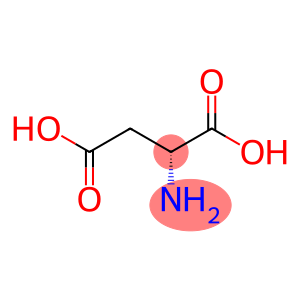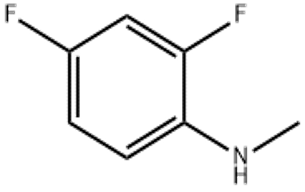D-Aspartic acid(CAS# 1783-96-6)
Risk and Safety
| Hazard Symbols | Xn – Harmful |
| Risk Codes | R20/21/22 – Harmful by inhalation, in contact with skin and if swallowed. R36/37/38 – Irritating to eyes, respiratory system and skin. |
| Safety Description | S24/25 – Avoid contact with skin and eyes. S36 – Wear suitable protective clothing. S26 – In case of contact with eyes, rinse immediately with plenty of water and seek medical advice. |
| WGK Germany | 3 |
| RTECS | CI9097500 |
| HS Code | 29224995 |
D-Aspartic acid(CAS# 1783-96-6) introduction
D-aspartic acid is an amino acid that is closely related to protein synthesis and metabolic processes in the human body. D-aspartic acid can be divided into two enantiomers, D- and L-, of which D-aspartic acid is the biologically active form.
Some of the properties of D-aspartic acid include:
1. Appearance: white crystalline or crystalline powder.
2. Solubility: Soluble in water and neutral pH, insoluble in organic solvents.
3. Stability: It is relatively stable at room temperature, but it is easy to decompose under high temperature or strong acid and alkali conditions.
D-aspartic acid has important functions in living organisms, mainly including:
1. Involved in the synthesis of proteins and peptides.
2. Involved in amino acid metabolism and energy production in the body.
3. As a neurotransmitter, it is involved in the process of neurotransmission.
4. May have a certain effect on enhancing cognitive function and anti-fatigue.
The preparation methods of D-aspartic acid mainly include chemical synthesis and biological fermentation. Chemical synthesis is a method of organic synthesis that uses specific reaction conditions and catalysts to obtain the target product. The biological fermentation method uses specific microorganisms, such as Escherichia coli, to react with suitable substrates to obtain aspartic acid through suitable process conditions.
1. D-aspartic acid has a certain irritating effect, avoid contact with skin and eyes. In case of contact, rinse immediately with water.
2. Appropriate personal protective equipment such as gloves and goggles should be worn during operation.
3. When storing, it should be avoided to mix with strong acids, strong alkalis and other chemicals to avoid dangerous reactions.
4. When storing, it should be sealed and kept away from moisture and direct sunlight.








